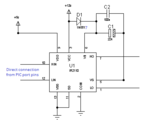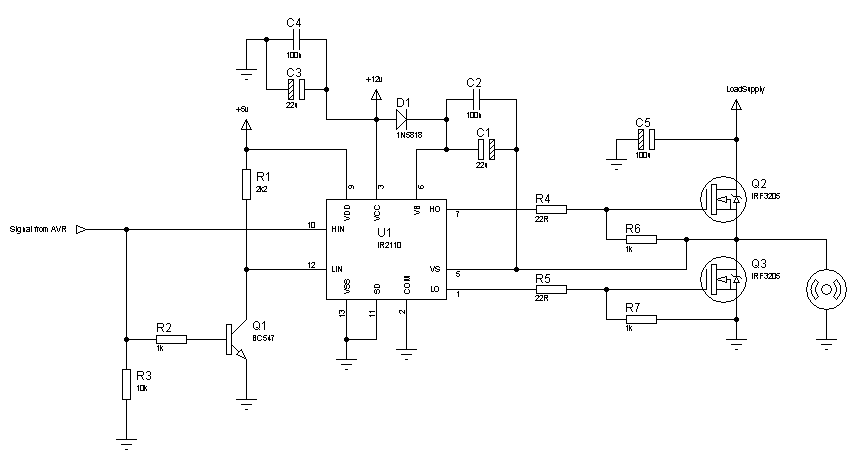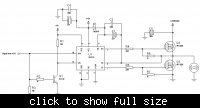babatundeawe
Full Member level 5
You can use a driver like IR21834 which has programmable dead time that can be set by the hardware. Deadtime is adjustable from 0.4us to 5us.
how can one achieve this using pic micro
thanks
Follow along with the video below to see how to install our site as a web app on your home screen.
Note: This feature may not be available in some browsers.
You can use a driver like IR21834 which has programmable dead time that can be set by the hardware. Deadtime is adjustable from 0.4us to 5us.
If you want to do it in software using the PIC, then, you add deadtime in the code to affect the output signal from the microcontroller.
I tried to simulate with along try it on the breadboard. And yesterday i succeeded to invert 7.4V DC voltage into AC.. Thanks for your help..
The ATmega8535 generating PWM, breadboard circuit of Full Bridge Inverter

Output of the inverter, still in low switching frequency

Output of the inverter, trying high switching frequency up to 20kHz

now currently i designing my PCB with altium for this project. Btw, i read in the datasheet that 1N5818 reverse voltage rating is only 30V. I planned to use 36V DC voltage for my inverter. Do i need to change the diode? Is there other diode that have similar characteristic with 1N5818 but with higher reverse voltage rating?
About the proteus, do you have any fullbridge inverter simulation file that i can modified to simulate my circuit? it don't have to use IR2110, maybe with some optocouplers for the gate driver?

You might have previously damaged the IR2110. Without the MOSFETs connected, the IR2110 must not be getting this hot. Try the same with another IR2110.
Okay. I'll change the chip. Could you please let me know using this circuit whether I can see the desired waveform at the HO and LO pint w.r.t ground? As I do not want to connect MOSFET for the initial test what about the pin Vs?
If the supply voltage is a stable dc (battery) do I need to connect your suggested capacitors? What is the advantage of connecting a small and a large capacitors in parallel across the supply voltage terminals?
I can also observe HO output by connecting oscilloscope probe with HO and Vs. So, I do not need to connect Vs to ground. Am I right?You can observe output at LO. To observe output at HO, connect VS to ground. Then, observe output at HO. Then remove the connection from VS to ground.
No. I've tried that previously and it doesn't show output. You can try though.aI can also observe HO output by connecting oscilloscope probe with HO and Vs. So, I do not need to connect Vs to ground. Am I right?
Is there any full bridge high low side MOSFET driver chip available in Bangladesh to be used here instead of two IR2110 IC? It would be also helpful if I get some equivalent IC number available here.
As far as I know, all you can get are IR2110, IR2112 and IR2113.
The TC4467/TC4468/TC4469 drivers can continuously
source up to 250 mA into ground referenced loads.
These devices are ideal for direct driving low current
motors or driving MOSFETs in a H-bridge configuration
for higher current motor drive (see Section 5.0 for
details). Having the logic gates onboard the driver can
help to reduce component count in many designs.
Hi,
You have to use a fast switching diode at the bootstrap. So, switch to 1N5818 as the first diagram shows. Try with this circuit, I think this should work:


Hope this helps.
Tahmid.
---------- Post added at 12:19 ---------- Previous post was at 12:17 ----------
C1, C3 - 22u
C2, C4 - 100n
C5 - 100u
R4, R5 - 22R
The rest of the resistors are in kilo-ohms.